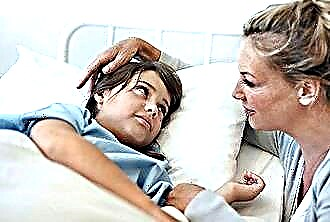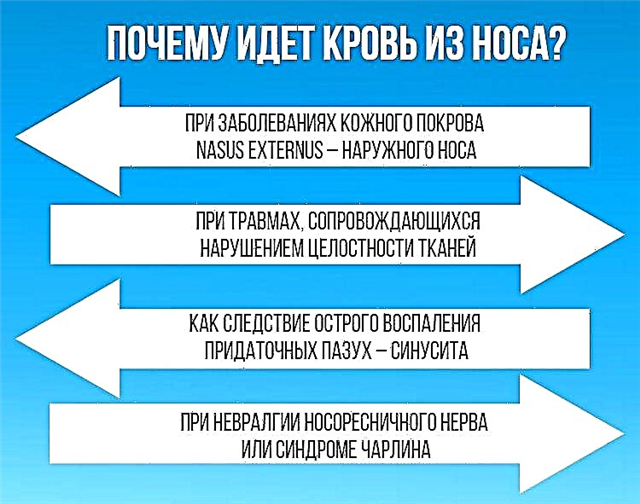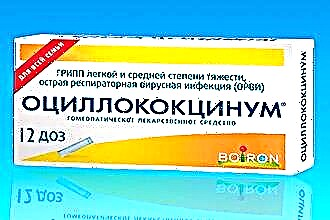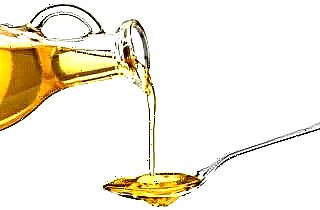Clinical symptoms
 The main symptom of the disease is an inflammatory process in the palatine tonsils, accompanied by symptoms of intoxication. Follicular tonsillitis in a child can develop independently or be a complication of ARVI. It is characterized by an acute onset, when the patient becomes unwell, the temperature rises. In addition, there is a sore throat. The most common symptoms are
The main symptom of the disease is an inflammatory process in the palatine tonsils, accompanied by symptoms of intoxication. Follicular tonsillitis in a child can develop independently or be a complication of ARVI. It is characterized by an acute onset, when the patient becomes unwell, the temperature rises. In addition, there is a sore throat. The most common symptoms are
- Increase, redness and swelling of the tonsils;
- the presence of purulent foci towering over the follicles;
- sore throat;
- severe weakness;
- decreased appetite;
- an increase in body temperature up to 39 degrees;
- enlargement and soreness of regional lymph nodes;
- the duration of the disease is about 7 days.
The patient's appearance is also characteristic: the child is lethargic, his skin and lips are dry, his cheeks are bright pink.
For children, a constant symptom is bad breath, which makes it possible to suspect this pathology.
They refuse to eat. Older children note a decrease in appetite and the presence of a sore throat, aggravated by swallowing and radiating to the neck and ear. Difficulty in speech is noted due to the presence of pain. In severe cases, vomiting and diarrhea may occur at an altitude of temperature.
Characterized by an increase in lymph nodes located on the anterior surface of the neck, in the lower jaw. They are the size of a pea, in some cases they grow to the size of a nut. In this case, the soreness of the lymph nodes is noted not only when palpating, but also at rest.
An important part of the patient's examination is pharyngoscopy, that is, a visual examination of the pharynx with a spatula. During such an examination, the attending physician notes the presence of single yellowish foci towering over the follicles. Their size often ranges from 2-3 mm. These foci are located under a layer of mucous epithelium, so attempts to scrape them with a spatula end in vain. After 2-3 days, these abscesses open up on their own, emptying the follicle. Due to the fact that these formations are accumulations of pus, this causes bad breath in children.
Diagnostics
 In the presence of the results of an objective examination, the diagnosis of follicular sore throat is usually not difficult. Follicular sore throat in a child must be differentiated from such diseases, accompanied by damage to the palatine tonsils:
In the presence of the results of an objective examination, the diagnosis of follicular sore throat is usually not difficult. Follicular sore throat in a child must be differentiated from such diseases, accompanied by damage to the palatine tonsils:
- chronic tonsillitis, in the acute stage;
- Infectious mononucleosis;
- diphtheria;
- scarlet fever.
In doubtful cases, laboratory tests can be carried out to clarify the diagnosis. The most informative, allowing to clarify the diagnosis, are
- a general blood test, which allows detecting an increase in ESR up to 20-30 mm, leukocytosis and a shift in the leukocyte formula to the left;
- bacteriological examination of lavage from the nasopharynx, which reveals the growth of a culture of streptococcus or staphylococcus;
- an increase in the titer of antibodies to streptococcal or staphylococcal antigen.
Treatment principles and regimen
Treatment of follicular sore throat in children usually takes place on an outpatient basis. Only patients in the first year of life need hospitalization, due to the fact that they are characterized by a more severe course of the disease and the development of complications, both local and systemic. In whatever conditions the therapeutic measures are carried out, their main directions are as follows:
- compliance with bed rest;

- the necessary diet;
- drinking plenty of fluids;
- antibiotic therapy;
- application of local procedures.
Compliance with bed rest is a prerequisite for recovery as soon as possible, when all the body's efforts are spent precisely on combating disease-causing agents. In addition, since the disease is accompanied by an increase in body temperature to high numbers, the patient should be dressed in cotton pajamas that facilitate sweat evaporation and heat transfer. Additional wrapping is contraindicated. For more successful heat transfer during illness, it is necessary to abandon synthetic diapers.
Special requirements for angina are imposed on the diet. Digestion of food is associated with energy costs. Therefore, in the presence of intoxication phenomena, the child should not be force-fed.
Food should be cleaned so as not to injure the affected tonsils.
For the same reason, it is recommended for serving at a moderate temperature. Spices, irritants, sour and salty are excluded. The most acceptable food products are broths, cereals, mashed boiled food.
Drinking plenty of fluids
Drinking plenty of fluids is indicated as detoxification measures, as well as to combat hyperthermia. Drinking enough warm drinks, on the one hand, promotes the elimination of toxic products in the urine, reducing their disease-causing effect and improving the general condition of the patient. On the other hand, such actions enhance heat exchange, increase evaporation from the skin surface, and therefore contribute to a decrease in body temperature.
Tea, compote, juice, mineral water, milk, rosehip broth can be used as drinks. Drinks should not be cold as this can make the sore throat worse. However, hot drinks can also have a negative effect on sore tonsils. In addition, this temperature does not contribute to heat transfer. In this regard, the recommended temperature for liquids used for drinking is 40-45 degrees.
Antipyretic drugs
The use of antipyretics is necessary only in cases where the child's body temperature exceeds 38 degrees.
In the rest, one should treat hyperthermia as a protective reaction of the body that develops in response to the action of a pathogenic pathogen. The use of antipyretic drugs is also justified if, despite taking non-drug measures, the child's condition worsens, vomiting and convulsions appear.
As an antipyretic agent for angina, paracetamol is the drug of choice for children. Available in various dosage forms, it can be used from the very birth of a child. In addition, this drug is not only effective, but also the safest among all drugs with a similar effect.
Antibiotic therapy
It is necessary to treat follicular sore throat with the obligatory use of antibiotics.
Otherwise, the disease can lead to the development of complications, such as tonsil abscess, purulent lymphadenitis. After a few weeks, signs of kidney and heart involvement may appear. The use of antibiotics contributes to the fastest normalization of the situation. Within 2-3 days after the start of taking this group of drugs, there is already an improvement in the condition, a decrease in the phenomena of intoxication. The picture in the throat cavity also changes. The tonsils are cleared of plaque, become less swollen and hyperemic.
 Due to the fact that follicular tonsillitis is caused by streptococcus or staphylococcus, it is possible to cure the child as soon as possible using antibiotics of the penicillin series. Most experts recommend using ampicillin, erythromycin, Flemoxin solutab. As with any antibiotic therapy, it is important to adhere to the dosage of the drug, the frequency of administration.
Due to the fact that follicular tonsillitis is caused by streptococcus or staphylococcus, it is possible to cure the child as soon as possible using antibiotics of the penicillin series. Most experts recommend using ampicillin, erythromycin, Flemoxin solutab. As with any antibiotic therapy, it is important to adhere to the dosage of the drug, the frequency of administration.
A prerequisite for the use of antibiotics for the treatment of angina is also the duration of their use. In children, the treatment of angina should take at least 7 days, even if by the third day there will be a normalization of the temperature and a significant improvement in the general condition. Discontinuation of the drug can lead to the development of complications of the disease, endocarditis, glomerulonephritis.
Topical preparations
Local treatment does not have a noticeable effect on the recovery time. However, the use of gargles, antiseptics in the form of aerosols or lozenges can help reduce sore throat. The most effective means used in this case are decoctions of herbs, chamomile, sage.
Saline or soda solutions are even more accessible and no less effective. For children, they are prepared in the following way: one teaspoon of soda per glass of warm boiled water or the same amount of salt per half liter. For washing, a glass of solution is usually used, the frequency of the procedure is 4-5 times a day. For the same purposes, a pharmaceutical agent such as "Aqua Maris" containing sea salt can also be used.
Aerosols Givalex, Tantum Verde, lollipops Lisobakt, Faringosept, Strepsils are used as drugs with antiseptic and anti-inflammatory effects. Some of them may contain local anesthetics, which enhances the analgesic effect of such agents. At the same time, local anesthetics are often allergens, and this fact must be taken into account when used in children who are intolerant to these drugs.
In addition, there are age restrictions on the use of aerosols in children. These funds cannot be used in children under 12 years of age, since it is difficult to determine the amount of a drug that has entered the body. In the conditions of the ENT office, the inflamed tonsils can be treated with a furacilin solution.
 Treatment of angina in children of the first year of life has some features due to their low weight, as well as insufficient development of the immune system and lymphoid tissue. First of all, this concerns the use of antibiotics. Their dosages should be carried out according to the weight and age of the child.
Treatment of angina in children of the first year of life has some features due to their low weight, as well as insufficient development of the immune system and lymphoid tissue. First of all, this concerns the use of antibiotics. Their dosages should be carried out according to the weight and age of the child.
Together with the antibiotic, agents are used to prevent the development of dysbiosis, Lactobacterin, Simbiter, etc.
When inflammation of the tonsils appears, to clarify the diagnosis, the child must be examined by specialists, a pediatrician, an ENT doctor, an infectious disease specialist. In doubtful cases, it is necessary to conduct additional laboratory tests. Treatment of follicular sore throat in children must necessarily include the appointment of antibiotics. Correct use of these drugs will prevent the development of severe complications.




